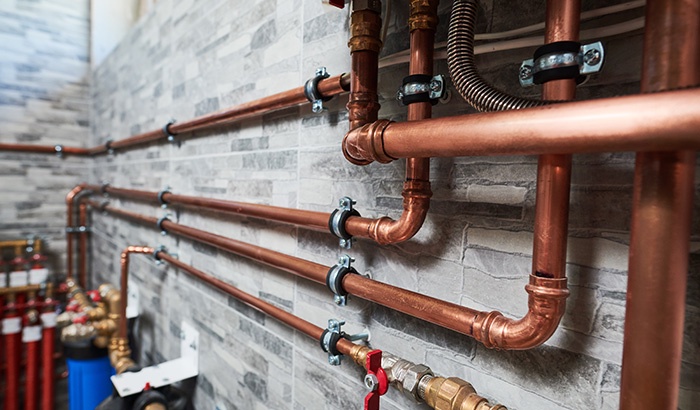Piping: An Essential Component of Plumbing Systems
Piping is a critical component of plumbing systems, carrying water, gas, and waste throughout buildings. Proper piping is essential for ensuring the efficiency and safety of plumbing systems.
Types of Piping Materials
There are several types of piping materials used in plumbing systems, including:
- Copper: Copper pipes are durable and resistant to corrosion, making them ideal for water supply lines.
- PEX: Cross-linked polyethylene (PEX) pipes are flexible and easy to install, commonly used for water supply lines and radiant heating systems.
- PVC: Polyvinyl chloride (PVC) pipes are lightweight and inexpensive, commonly used for drainage and vent lines.
- Galvanized steel: Galvanized steel pipes are strong and durable, but can corrode over time, leading to leaks and reduced water pressure.
Signs You Need Re-piping
There are several signs that indicate you may need to re-pipe your plumbing system, including:
- Persistent leaks: If you have recurring leaks despite repairs, it may be a sign that your pipes are deteriorating.
- Low water pressure: Reduced water pressure can indicate that your pipes are clogged or damaged.
- Rusty or discolored water: Rusty or discolored water coming from your taps can indicate corroded pipes.
- Strange noises: Gurgling or banging noises coming from your pipes can indicate air pockets or loose pipes.
The Re-piping Process
The re-piping process involves replacing old or damaged pipes with new ones. The process typically includes the following steps:
- Inspection: A professional plumber will inspect your pipes to determine the extent of the damage and the best course of action.
- Preparation: The area around the pipes will be prepared for re-piping, including removing any obstacles or fixtures that may be in the way.
- Pipe removal: The old pipes will be removed using specialized tools and equipment.
- Pipe installation: New pipes will be installed in place of the old ones, ensuring a secure and watertight fit.
- Testing: The new pipes will be tested to ensure they are functioning properly and there are no leaks.
Benefits of Re-piping
There are several benefits to re-piping your plumbing system, including:
- Improved water quality: Re-piping can improve the quality of your water by eliminating rust and corrosion from old pipes.
- Increased water pressure: Re-piping can improve water pressure by eliminating clogs and leaks in old pipes.
- Energy efficiency: Re-piping can improve the efficiency of your plumbing system, reducing your energy bills.
Conclusion
Piping and re-piping are essential aspects of maintaining a functional plumbing system. By understanding the signs that indicate you may need re-piping and hiring a professional plumber to perform the re-piping, you can ensure that your plumbing system functions properly for years to come.


No comments yet